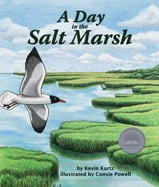Alignment to Standards for NY

| Grade | Number | Standard |
|---|---|---|
| K,1,2,3,4 | K-4..3.1a (iv) | claws, shells, spines, feathers, fur, scales, and color of body covering enable some animals to protect themselves from predators and other environmental conditions, or enable them to obtain food |
| K,1,2,3,4 | K-4.1.1a(iii) | Natural cycles and patterns include the length of daylight and darkness varying with the seasons |
| K,1,2,3,4 | K-4.1.1b | Plants require air, water, nutrients, and light in order to live and thrive. |
| K,1,2,3,4 | K-4.3.1a | Each animal has different structures that serve different functions in growth, survival, and reproduction. |
| K,1,2,3,4 | K-4.3.1a (i) | wings, legs, or fins enable some animals to seek shelter and escape predators |
| K,1,2,3,4 | K-4.3.1a (ii) | the mouth, including teeth, jaws, and tongue, enables some animals to eat and drink |
| K,1,2,3,4 | K-4.3.1a (iii) | eyes, nose, ears, tongue, and skin of some animals enable the animals to sense their surroundings |
| K,1,2,3,4 | K-4.3.1c | In order to survive in their environment, plants and animals must be adapted to that environment. |
| K,1,2,3,4 | K-4.3.1c (iii) | animal adaptations include coloration for warning or attraction, camouflage, defense mechanisms, movement, hibernation, and migration |
| K,1,2,3,4 | K-4.4.2b | Food supplies the energy and materials necessary for growth and repair. |
| K,1,2,3,4 | K-4.5.1b | An organismês external physical features can enable it to carry out life functions in its particular environment. |
| K,1,2,3,4 | K-4.5.2b | Animals respond to change in their environment, (e.g., perspiration, heart rate, breathing rate, eye blinking, shivering, and salivating). |
| K,1,2,3,4 | K-4.5.2d | Some animals, including humans, move from place to place to meet their needs. |
| K,1,2,3,4 | K-4.5.2f | Some animal behaviors are influenced by environmental conditions:nest building, hibernating, hunting, migrating, and communicating. |
| K,1,2,3,4 | K-4.6.1e | An organismês pattern of behavior is related to the nature of that organismês environment, including the kinds and numbers of other organisms present, the availability of food and other resources, and the physical characteristics of the environment. |